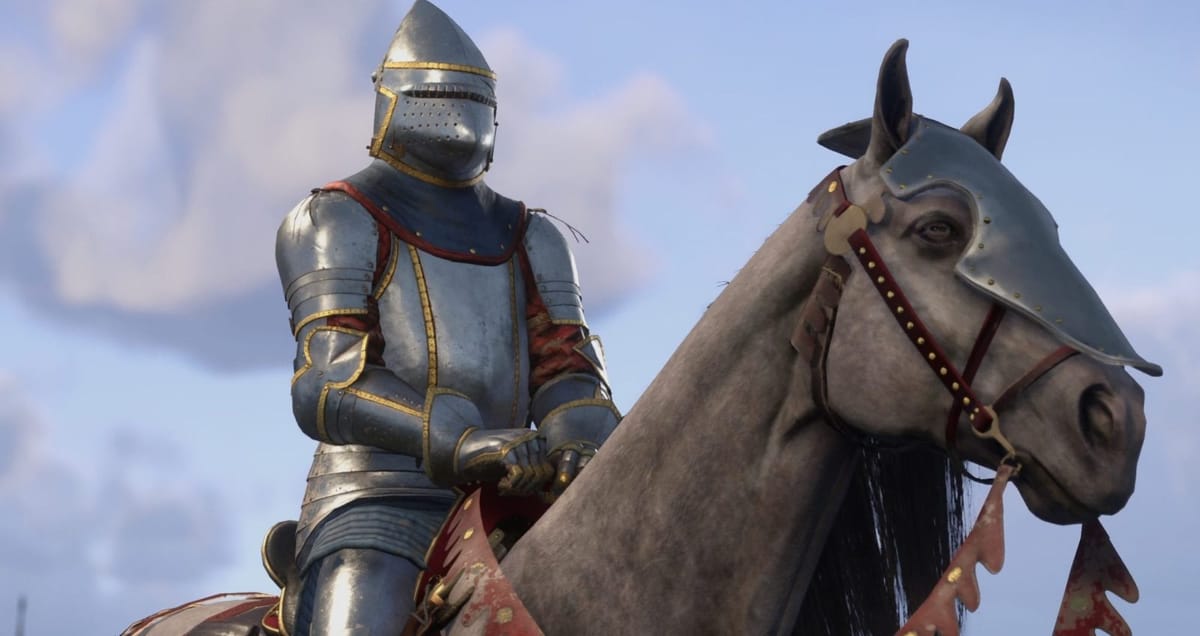
I’ll never forget my first interaction on Kickstarter. A little game made by Warhorse Studios called Kingdom Come: Deliverance – a medieval RPG – needed support. Given my affinity for not only RPGs but the historical nature of the game, I backed it instantly, and the rest is history. Now, almost seven years after release to the day, the sequel is finally in hand. Even though unsheathing your blade is as comically difficult as it was in the original, Kingdom Come: Deliverance II is an incredibly crafted experience that continues to grow on you as the hours pass by.
Everything begins with a sunny trip down a dirt road. Henry, our returning protagonist, is accompanying Lord Hans Capon (another character from the original game) and company into the region of Trosky with a letter. Their purpose? Deliver a letter to Lord Otto von Bergow in hopes to encourage him and the League of Lords to defect from their service to the opposing King Sigismund and turn to their monarch King Wenceslas. There’s a whole lot of backstory to this, and a good bit of it exists in the first game, but long story short, we need to change Lord von Bergow’s mind.
https://www.youtube.com/watch?v=aqM_YfPdRl8Before you’re able to do that, you and Hans have to escape an ambush of your camp. Naturally, this happens while you are out of armor, bathing in a nearby pond. Things don’t go well, with Henry taking an arrow to the shoulder and falling off a cliff, but eventually you find yourself in an old woman’s hut, with Hans and Henry fighting for their lives in recovery. After a linear tutorial stage which gives you a little bit of a rundown on the mechanics, it’s off to Lord von Bergow’s castle to continue with your mission, although without the letter. You can’t just write up another as that one would be missing the official seals of the office that sent it.
While there’s a lot to this opening, it sets up a journey that is the very definition of a tangled web. Not only are there a plethora of choices you’ll make that will each come with their own consequences, but fresh friendships and new betrayals around every corner. Although that may sound a bit complex, KCD2 approaches it the right way, with enough in between these interactions to not become overbearing. Only one of the twists feels a little off, and that could be because I didn’t get to know the character that well – though to my credit, I don’t believe you associate that much with them.
There is a very natural flow in KCD2’s narrative. Most of the important tasks at hand aren’t pressing to the point you feel a break in immersion by walking away. Sure, there will always be the “we’ll do this in the morning”, and three game days later you come in covered in blood and mud from your expeditions. It’s more the exception than the rule here, but there was a specific moment early in the story when I lost some reputation for not returning quick enough to report on the status of a mission. The world of KCD2 feels alive in this respect, but without a strenuous schoolmaster forcing your hand to continue on your current objective.
Character development is something we see a lot of media struggle with, but KCD2 is absolutely stellar in that regard. Tom McKay’s Henry grows tremendously throughout the events of of the narrative, and you feel the weight of each decision you put on his shoulders. One of the things that works so well in this game is that while you’re the main character, you’re not the most important character in the room. Henry is certainly appreciated – especially if you’re making the choices that lead to that – but he’s just a guy, which makes him relatable. His adventure from beginning to end is extremely satisfying to watch unfold, and it feels a bit like your own story with your involvement in each choice.
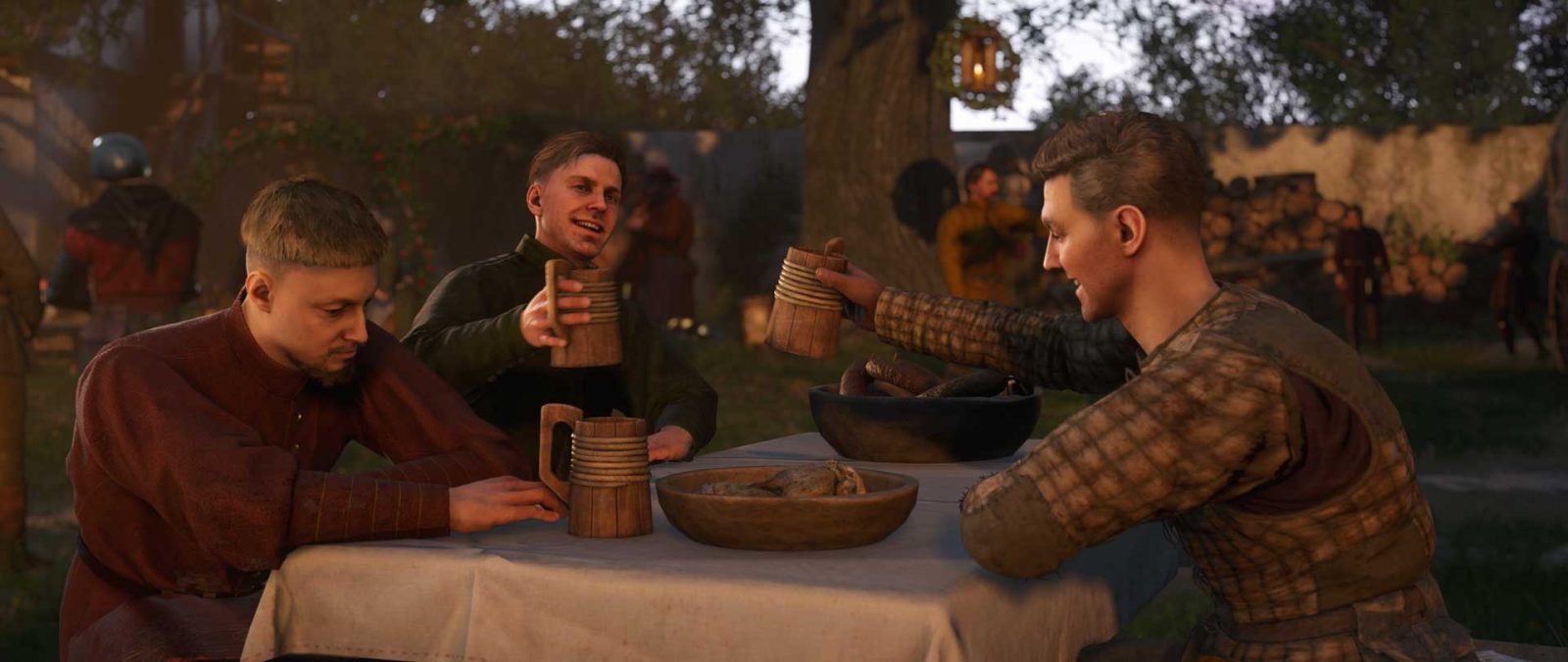
Beyond Henry, the game features a phenomenal cast, with Luke Dale’s Lord Capon stealing the stage every time he makes an appearance. Katherine’s arc is outstanding – a strong female character in an era where that isn’t always the case. Others, like Lady Rosa Ruthard, Jan Zizka, Adder, Otto von Bergow; even a barely on-screen alehouse maid in a murder mystery side mission are well written and acted. Believability is the crux for a more realistic world, and KCD2 nails that with their characters.
Thematically, I find the tone to be perfectly and slowly built throughout the game. 1400s Bohemia is certainly a very different era, and that’s projected from the get-go. The way peasants interact with people of high station and vice-versa, the construction of the towns, everything from the dried perch to the instruments of war feels meticulously curated for KCD2. It also exists in how the story presents itself, and I’m happy to see it never takes itself too seriously. Considering you have literal crap dumped on your head within the first hour or so should speak volumes, but Warhorse weaves in a laugh exactly when they should while establishing the consequential nature of the game. As the story trailer mentions, “War is a nasty business”, and the portrayal is expert-level without being one-note.
Player choice is a big part of this, and the freedom presented to you is somewhat astronomical. For instance, I had to reach someone towards the beginning of the narrative, and it was urgent. Still, I had to store a few sacks of grain for someone first, and after that, everything opened up. I could go and help a cook open a chest in the cellar, which would benefit me later, or try to use things I learned in conversation to gain the trust of a guard. Even after that, my choices followed me, with needing to craft a potion to help the character I needed to talk to so earnestly. Because of decisions I made along the way, proceeding through this next set of tasks could be easy, or it could be a pain in the butt.
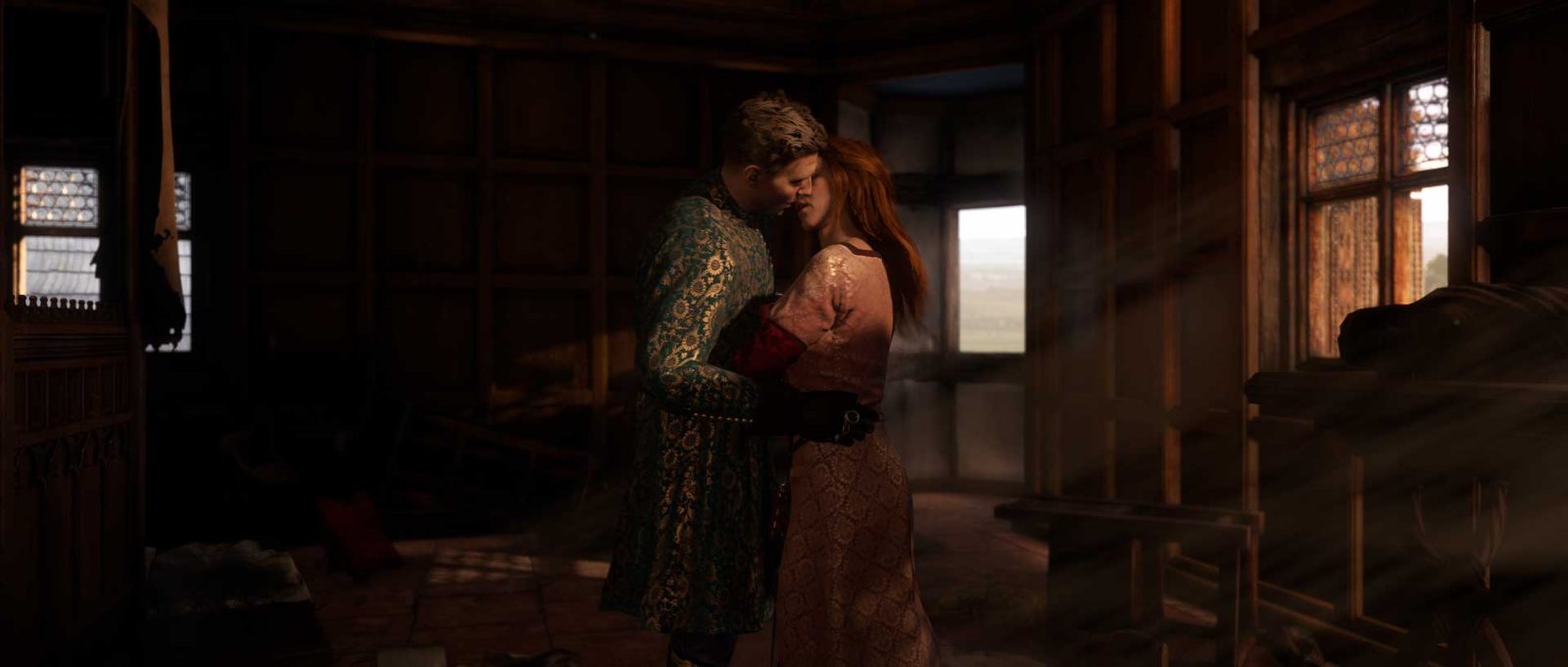
Even further, choices I had made beforehand came back to bite me as well. Given I was a “good boy” Henry (except when it came to romance), I hadn’t invested a lot of time into lockpicking, along with choosing a different avenue to complete an earlier quest that didn’t lead me into the darker side of Trosky. Because of that, I had to come at this quest from another angle, and while there were still complications, I was able to solve my problem… eventually. This is just great design, especially as in talking with my Editor-In-Chief Ron Burke, we’ve both taken completely different routes in certain tasks to get to the same result.
Ron, on the other hand, is not a good boy and stuffed everything that wasn’t nailed down into his pockets so he could fence them later. It meant a trade-off that he was always one step ahead of the law and spending more time buying dark clothing and slinking around at night than I was. There’s plenty of choice available in KCD2 in how you approach each situation or mission, and the decision is entirely yours. It’s amazing to watch play out, and it speaks to the flexibility Warhorse has built into their game.
One of the reasons some of these missions can be difficult, however, is the survival element of KCD2. If you remember, the original Kingdom Come: Deliverance was the same, making you eat and sleep, learn to read, and more obtuse assignments in the name of “gitting gud”. Henry is a peasant, and as a peasant, is good for nothing. By extension, you are too. Thankfully, you’re not as dumb since the events of the previous game have toughened Henry up, but a fall and injury at the beginning of this sequel means you’re kind of starting at square one once again – though at least you’ve not forgotten how to read this time around.
To increase your chances at survival, you’re going to have to do stuff to improve. You’ll remember a lot of this sort of leveling from the original, or something like Skyrim if you aren’t familiar with KCD. Do the thing, get better at it. You’ll also earn perks that add to your learning. Making decoctions at an alchemy table is great, but gaining a new level and adding a perk that gives me extra potions based on how well I follow the recipe is even better. Using one set of ingredients and getting FOUR high level potions is well worth the work it took to get there, quite the rewarding payoff.
One of the best parts about Deliverance II is that there is no silver bullet. You can spend a great deal of time at the alchemy table and become something of a mixologist wizard (speaking of, these mini-games for crafting are terrific), but that won’t save you if you’ve not spent the time to learn how to use a weapon. Similarly, you’re going to have a hard time if all you’ve done is spent time mastering the bow. Balancing it out is going to raise your chances, but no one path is the right one. Even speech, which is notoriously unbalanced in just about any RPG, won’t save your skin in many situations.
That journey at the beginning may be off-putting to some, just as it was in the previous game. The steep learning curve of Kingdom Come can be maddening, as sometimes you’ll find yourself in situations where you are bound to lose. If you can keep heart in those moments and press on, (or learn that running affords you the chance to fight another day) I promise you it gets better. For example, where at the start I could barely beat a single opponent in combat, by mid-game I was taking out six by myself. I’m not saying that’s always possible, but in a game this fantastic, it’s worthwhile.
Continuing on the theme of journey, this is a world where getting lost and exploring everything is highly encouraged. While hunting for a man who either wandered off and got murdered (a frequent occurrence, it seems), I stumbled upon a shrine. That led me down a completely different path but soon I was distracted by a quest to find a hijacked cart. Picking up the loot from the cart I was approached by a messenger who lost his message. He offered me the choice to help him cover his screw up – I could punch him in the face, or try to convince him to own up to his mistake. Meanwhile, Ron didn’t encounter this task until a whopping 50 hours later than I did!
Heading down the road I encountered a man arguing with a bandit in the road that ended up being an ambush. While fighting this crew of vagabonds, I survived by the skin of my teeth thanks to a random passer by who ripped them to shreds as he was heavily armored and ready to fight. I still haven’t found the lost huntsman, but I know that I added a few dozen more entries on my map of things to explore. This world is packed to the gills with interesting and often random encounters that don’t always end the way you’d expect.
Speaking of fighting, let’s talk about combat. Rule of thumb: don’t engage multiple hostiles. Unless you are high-leveled, know the tricks to finish them, or are just crazy, you need to try your best to take on one, maybe two at a time. This was present in the first game, with the melee combat injecting more realism to it. You have a star reticle in which you’ll aim your swipe or poke by choosing a point, although in KCD2 the bottom half of the star has been combined, giving you four instead of five. I’m not sure it makes things much easier, but I appreciate the effort.
Thankfully, it’s not all about practice with weapons this time around. Trainers are all over the place, waiting to show you some trick or another to help you gain an edge. One guy taught me how to smash somebody in the nose with the pommel of my sword during a clinch, while another taught me how to carefully tilt my sword from my hip during a grapple to run my opponent through the throat, ending the fight instantly. Just like the first game, combat can end in the blink of an eye, so having every possible advantage is key.
There is a lot of variety in the weaponry of KCD2, and the above choice of combat design is complemented by that. Grabbing a random weapon won’t help you if you aren’t sure how to use it. If you take your time learning it and working with said masters, you can balance out what you’re good at. Maces, hammers, polearms, daggers, and more are at your disposal, and they all have their own patterns of use to learn.
For long range affairs, bows return, along with a few other surprises for the marksman among us. I did struggle a bit with the bow, but that feels like more from lack of practice than anything. Still, the deer you shoot seem to shrug off all but the strongest of bows and specialized arrows, which can be frustrating if you’re trying to hunt to rustle up precious groschen for gear and training.
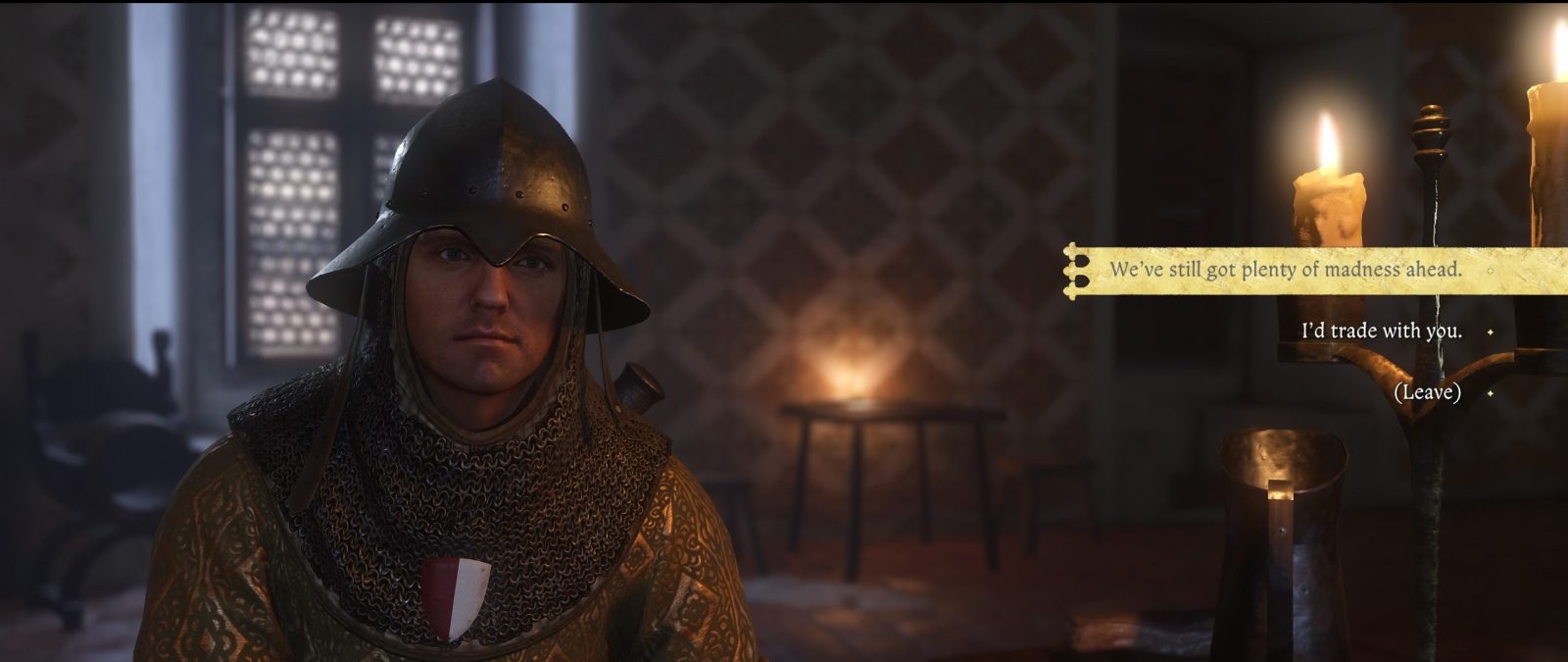
If you don’t feel like getting into a skirmish, you can always talk your way out, which is something I always love doing in video games. Warhorse does a fantastic job of crafting dialogue that makes sense, along with pathways to optimal reconciliation. Just because you’re a high level in strength doesn’t mean that’s the best way to resolve a situation, as a strong outlaw isn’t going to be intimidated by you. Dialogue options built off of your skills – along with regular responses if you don’t feel as confident in an answer – are awesome when done right, and they are on another level here.
All of the dialogue is a pleasure, and it makes the game feel incredibly human. Most responses I encounter feel like a real person is talking with me, which makes for enjoyable conversation. It also means that certain decisions you make as the main story plays out feel decidedly ruthless, just as much as some give you the warm fuzzies. Similarly, people’s perception of you matters, as if you’re dirty, you’ll be looked down upon, or if you stink, it’ll hurt your charisma and speech given people don’t want to smell you, let alone talk with you. Even the nicest old lady in the village will mutter how you need to take a bath if you stink of road and viscera. This also extends to your interactions in a fight, as mentioned above with the random passerby. It’s these kinds of levels of detail that can both frustrate or bring a smile to your face, and it’s all the latter for me.
As you explore the open world, you’ll come across plenty of side missions. There is a wide delta between RPGs like this one and most other “semi-open world” titles on the market. Some go for a “more is better” approach, randomly generating, and often repeating, their side quests. Kingdom Come: Deliverance II goes the opposite direction, hand-crafting each and every side mission. Some are on a higher tier of importance, like the murder mystery mentioned earlier in this review (and that is a phenomenal example of content worthy of inclusion in the main mission). Others involve smaller stakes, but are just as well constructed.
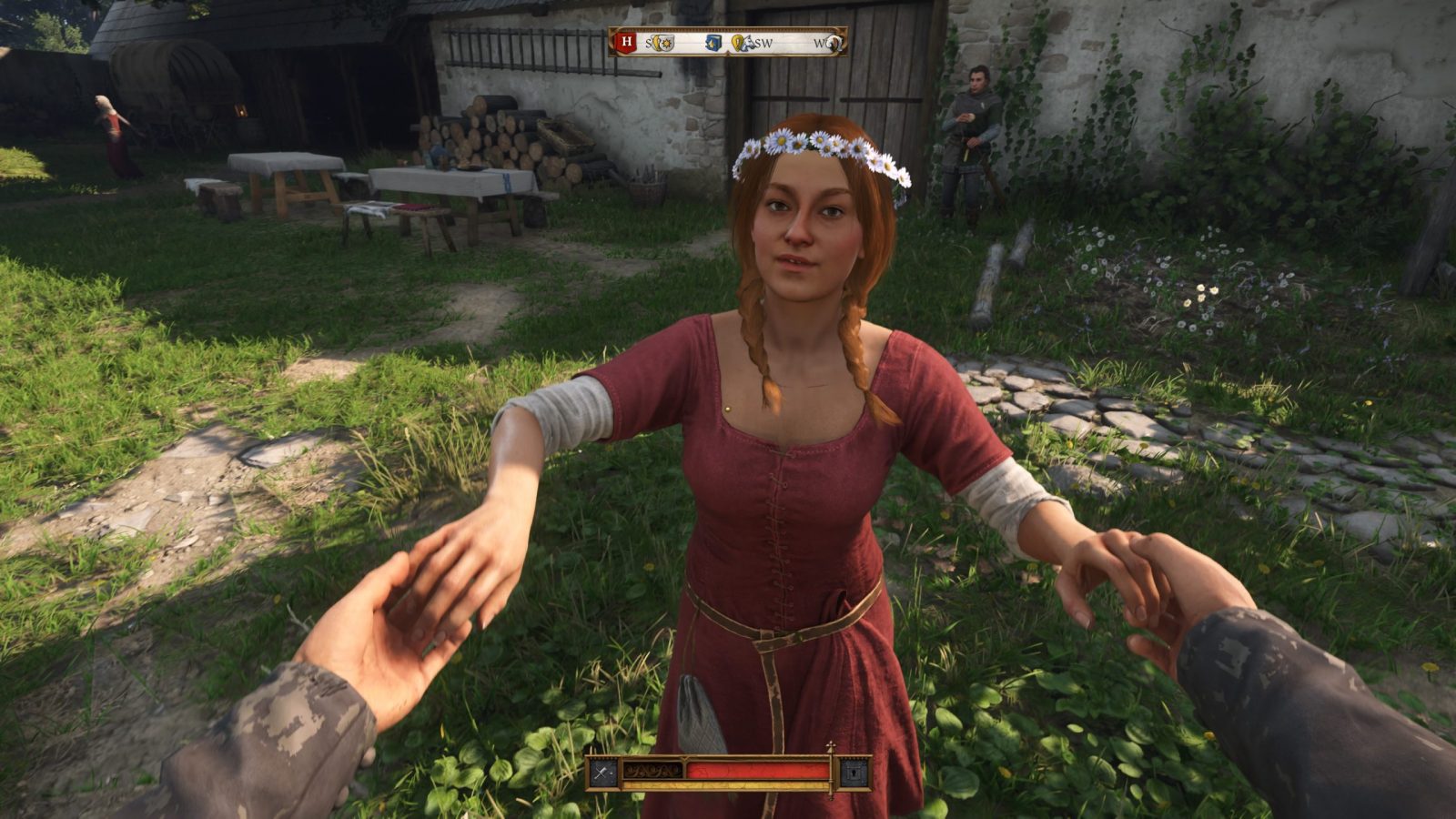
Dancing at a wedding
All of them, without exception, have more going on than simply delivering a thing from here to there. A simple “Hey, this person wandered off. Hope they’re ok!” mission had me riding across the entire map, joining in a hunt with a noble, killing bandits, convincing somebody to give up a precious artifact, then trading that precious artifact for a different one, then healing a family rift! So much for an easy side quest. I can’t say that I can think of a single side quest that didn’t feel rewarding. Just like The Witcher III: Wild Hunt, each and every time you put boots to the road, the game carries you to some far off and unexpected place.
Speaking of the semi-open world – this game is BIG. How big? Try double the already-huge previous game. Bisected by a story beat, the game takes you to two regions this time around, so make sure you finish up your business before you trigger that linear section. The game even warns you before you kick things off, so pay attention – it’s not kidding when it says you won’t be back for a while. Also, thank you Warhorse for the follow button that allows you to set your controller down and just enjoy the ride on a path or behind a character heading towards your next task. This function needs to be in everything.
By the above description, you’d certainly expect KCD2 to be a large game in terms of length as well, and you aren’t wrong there either. I put in over sixty hours into the game, and there are still plenty of side quests I need to go back to. Ron has sixty plus as well; and he only just made it to the second map. There is a ridiculous amount of content here, and whether you want to play for a few weeks or several months, there will be plenty of value for your dollar.
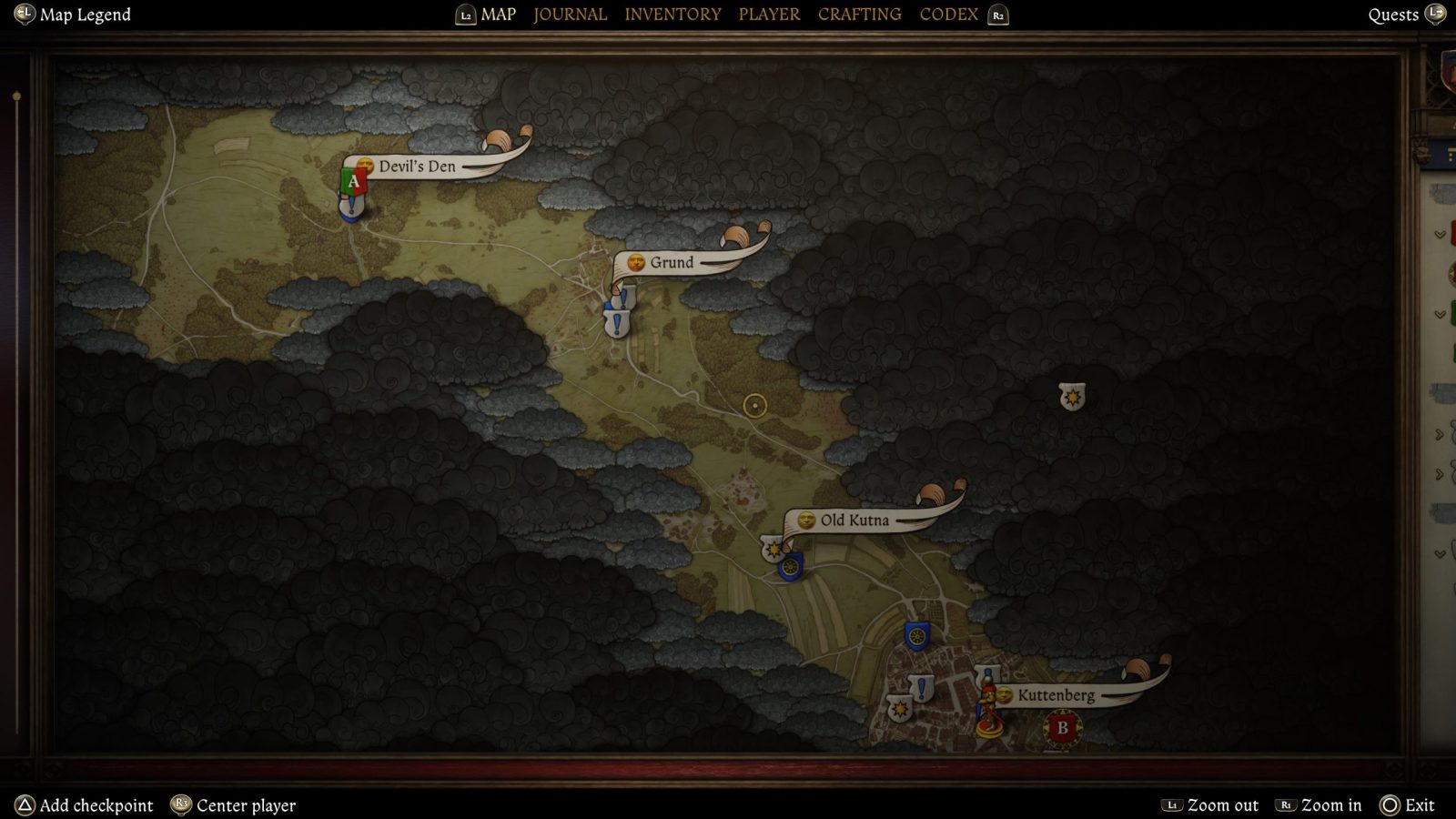
The huge Kuttenberg section of the second map, which still has a whole page worth of map underneath
I do occasionally feel the cold hand of “videogame” in KCD2. For example, in my wanderlust I stumbled upon an illegal poaching camp. Deer were strung up for processing, a makeshift tanning rack and scraping bench was set up. Some skins were already prepped and rolled, ready for sale. Looking around the camp I found that I couldn’t take or interact with much of anything in that camp. I couldn’t run off with their skins, snag some of the meat, or do anything beyond sleep in their bed and steal a single flask of Schnaps. Moments like this break the immersion of the world – this is a grand opportunity for me to steal from these poachers, but instead it just ends up being window dressing for a very pretty world. What’s equally as baffling is that I could just as easily tell you about another camp where every head of cabbage, dagger, arrow, skin, and box were interactive. Consistency could be better in this department.
That said, there’s nothing but consistency in the incredible visuals KCD2 offers. There’s no two ways about it, this game is absolutely gorgeous no matter what platform you play it on. I’m on the PlayStation 5 Pro, and Ron is running on PC with a blisteringly fast RTX 5090. Every blade of grass, tree, and flower flows with the wind. Armor glints in the sunlight (when it’s not covered in mud, blood, and worse), and every piece of cloth looks like, well, cloth. Character models are incredibly detailed and expressive — seriously, the mocap actors look one for one. The first game was a visual feast, but this sequel somehow exceeds that in every way.
On PC, Ron is able to run at 4K with everything maxed out, as you’d expect. It’s not optimized, but there’s even an “experimental” mode above Ultra settings. It warns you that it’s going to run terribly and that it’s meant for “future hardware”. Well, not for the 5080 or the 5090 it seems – it runs at 4K / 60 for the most part. Not too shabby for something that you know isn’t optimized and is thrown in for fun. I guess the future is now.
In a game this big, you’re bound to run into the most dreaded of enemies – bugs. Most of the bugs are merely cosmetic, such as subtitles not matching the words that come out of somebody’s mouth, or the person stuttering as you are too far away from them on horseback, so they rapidly restart their speech. One sequence had a main villain speaking with an entirely wrong voice and saying somebody else’s lines – likely placeholders on pre-launch code.
A frequent but more problematic one is the description of potential encounters as you fast travel. When you’re moving from town to town you’ll get a message that says “You encounter a kind hearted woman who is carrying a basket of puppies and smells of a warm breeze laced with the gentlest of soft flowers” and then the game asks if you’d like to stop. You can choose to do so, or have a percentage chance of avoiding the encounter. If you say “Of course I’ll stop – puppies!” you might suddenly get a prompt response that says “The vicious band of evil cutthroats bear their blood-soaked teeth” or something like that. I’m exaggerating, but it illustrates the point – these need to match so I can survive in a world where everyone wants to kill me for my boots.
There are also plenty of “Skyrim-level” bugs. In the very first scene, Lord Capon was sitting, but hovering in the air on nothing. Apparently he missed the stump behind him to the left. In other scenes, the speaker had vanished, as if they had put on an invisibility cloak. While the bugs we mentioned can be annoying depending on their nature, nothing we’ve run into has been game breaking, which is great to see.
Kingdom Come: Deliverance II
Excellent
Kingdom Come: Deliverance II is a special RPG that ranks with the Skyrims and Witchers of its genre. Despite a high learning curve, I found myself lost in its clutches for hours on end, immersed in the world of 1400s Bohemia. An absolutely gorgeous setting that's satisfying to explore, combined with rewarding progression and an outstanding narrative makes KCD2 a lock for awards season.
Pros
- Magnificent story
- Impressive, humongous, and detail open world
- Expertly crafted RPG elements
- Rewarding payoff to your decisions and leveling
- Mind-blowing visuals
Cons
- Steep initial learning curve
- Some impactful bugs remain
